VERY RARE! 8th Infantry Battalion Canadian Expeditionary Force Drocourt-Quéant Line 1918 Trench Map of Hindenburg Line
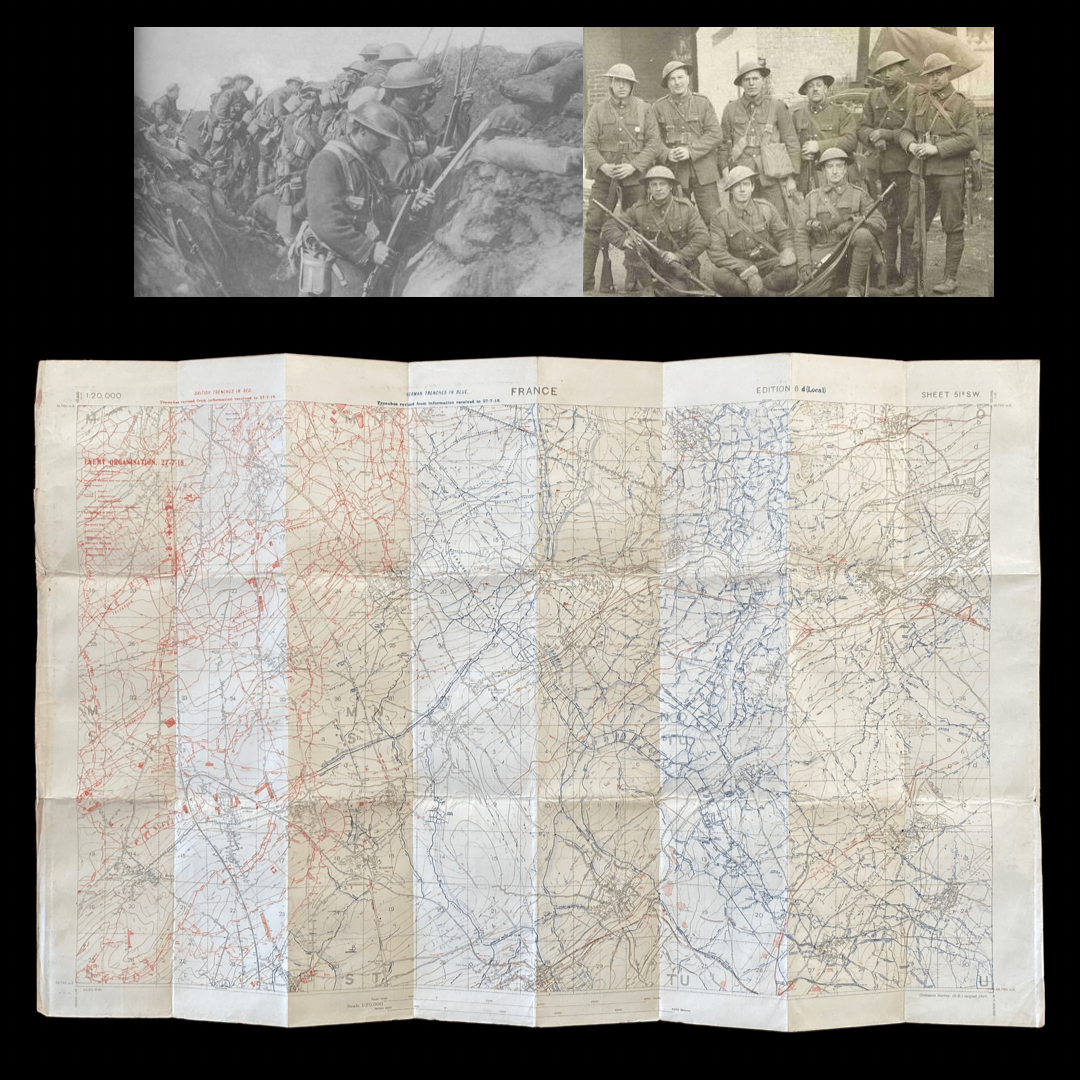
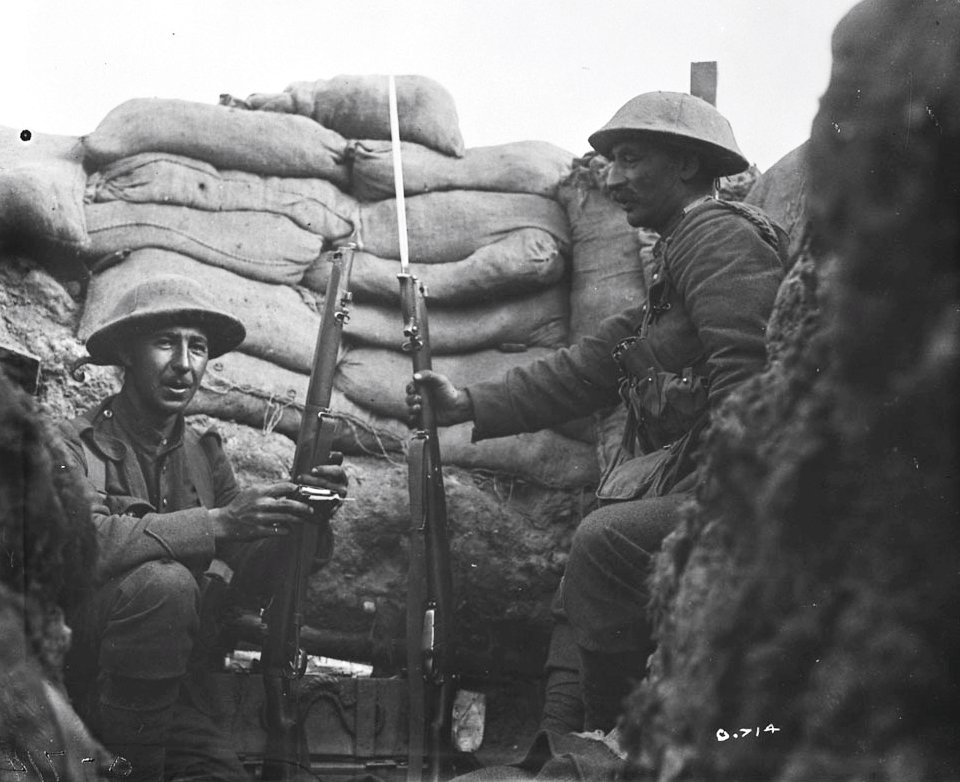

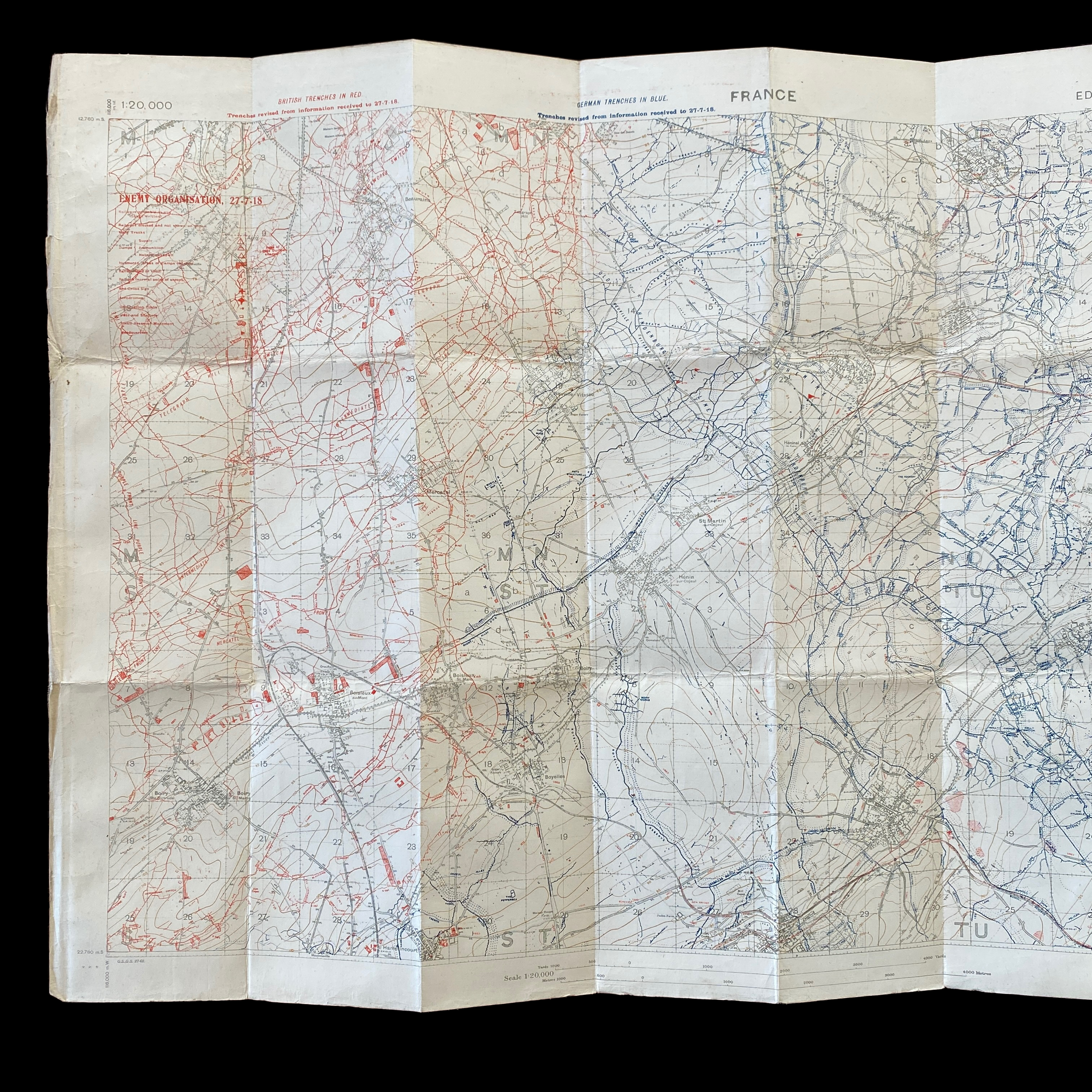
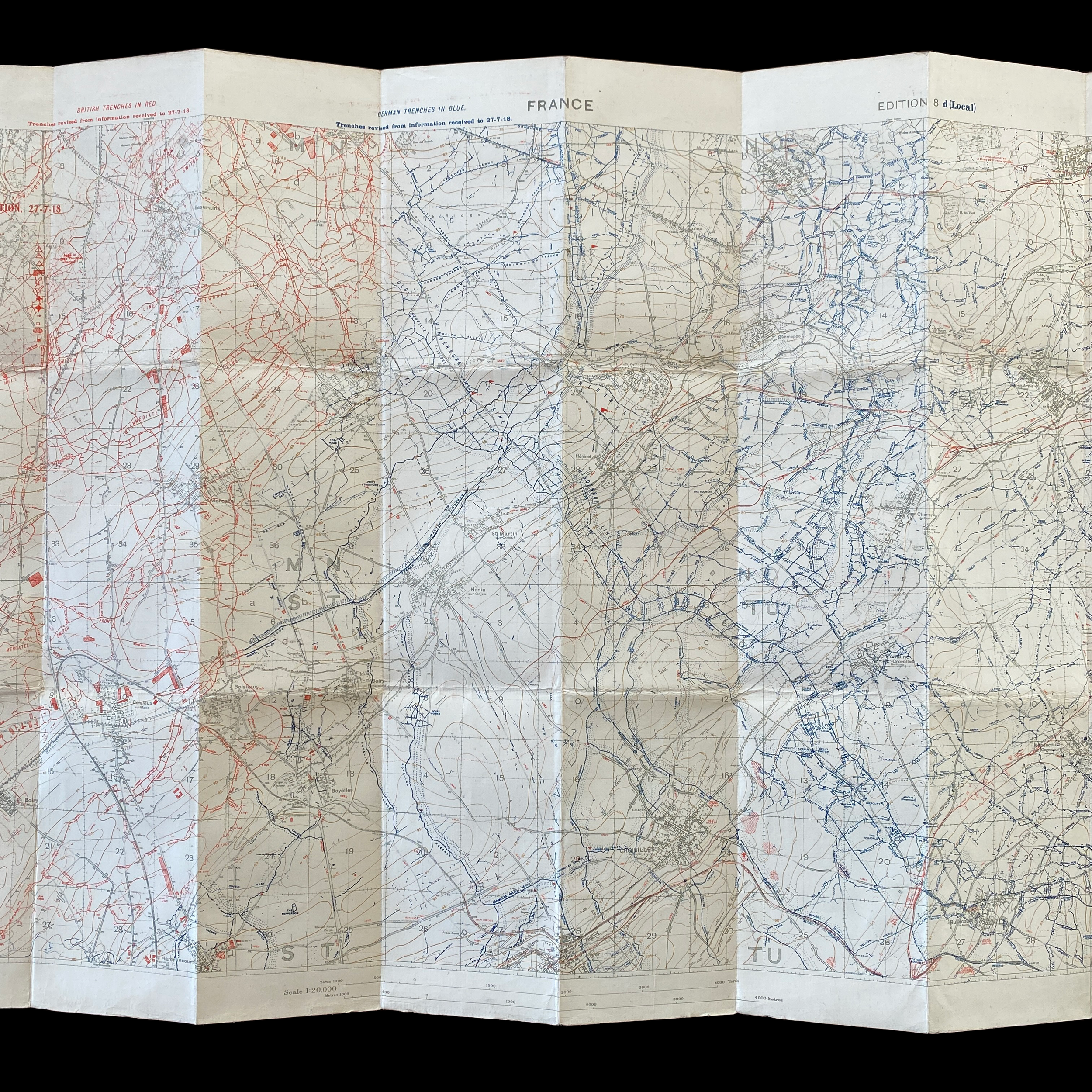
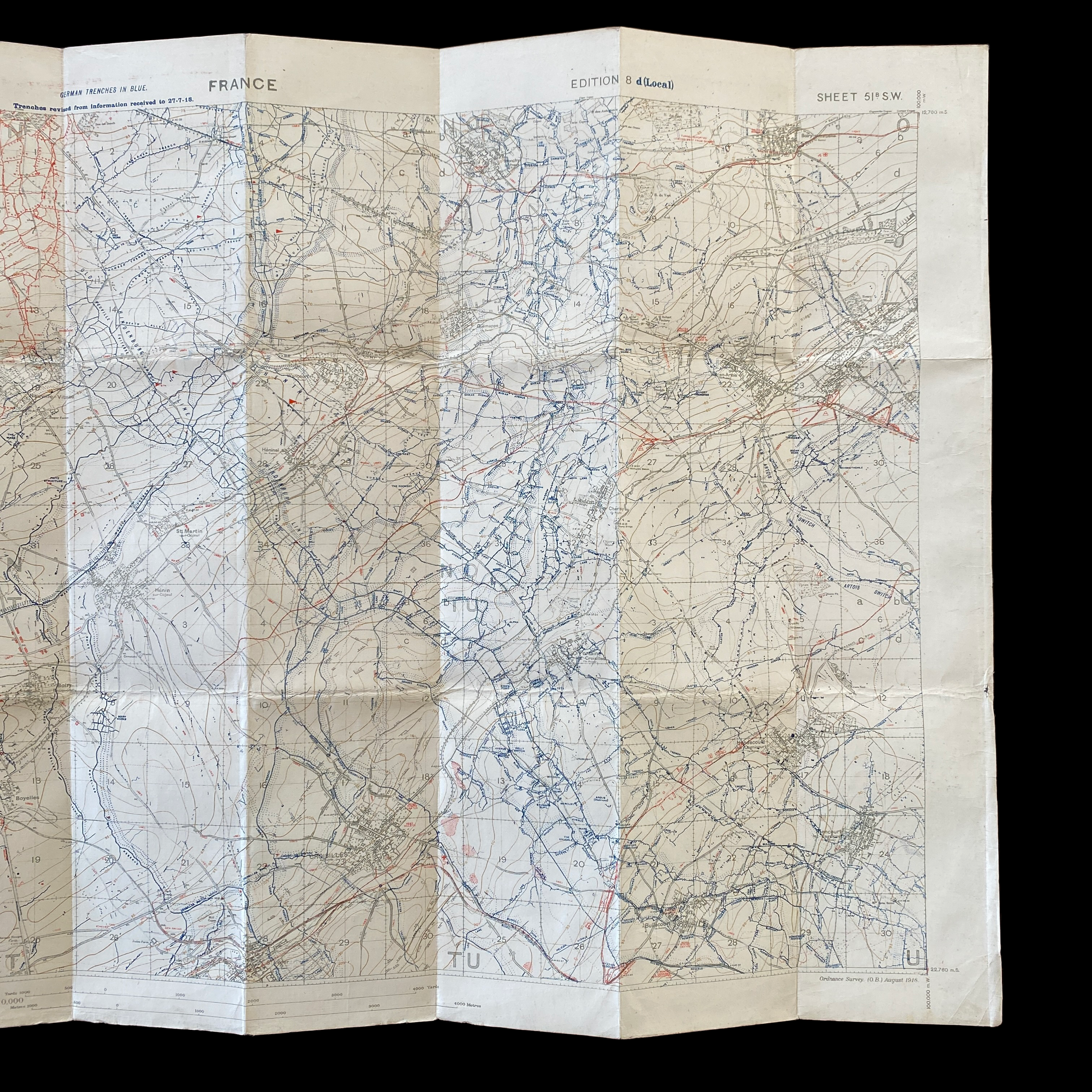

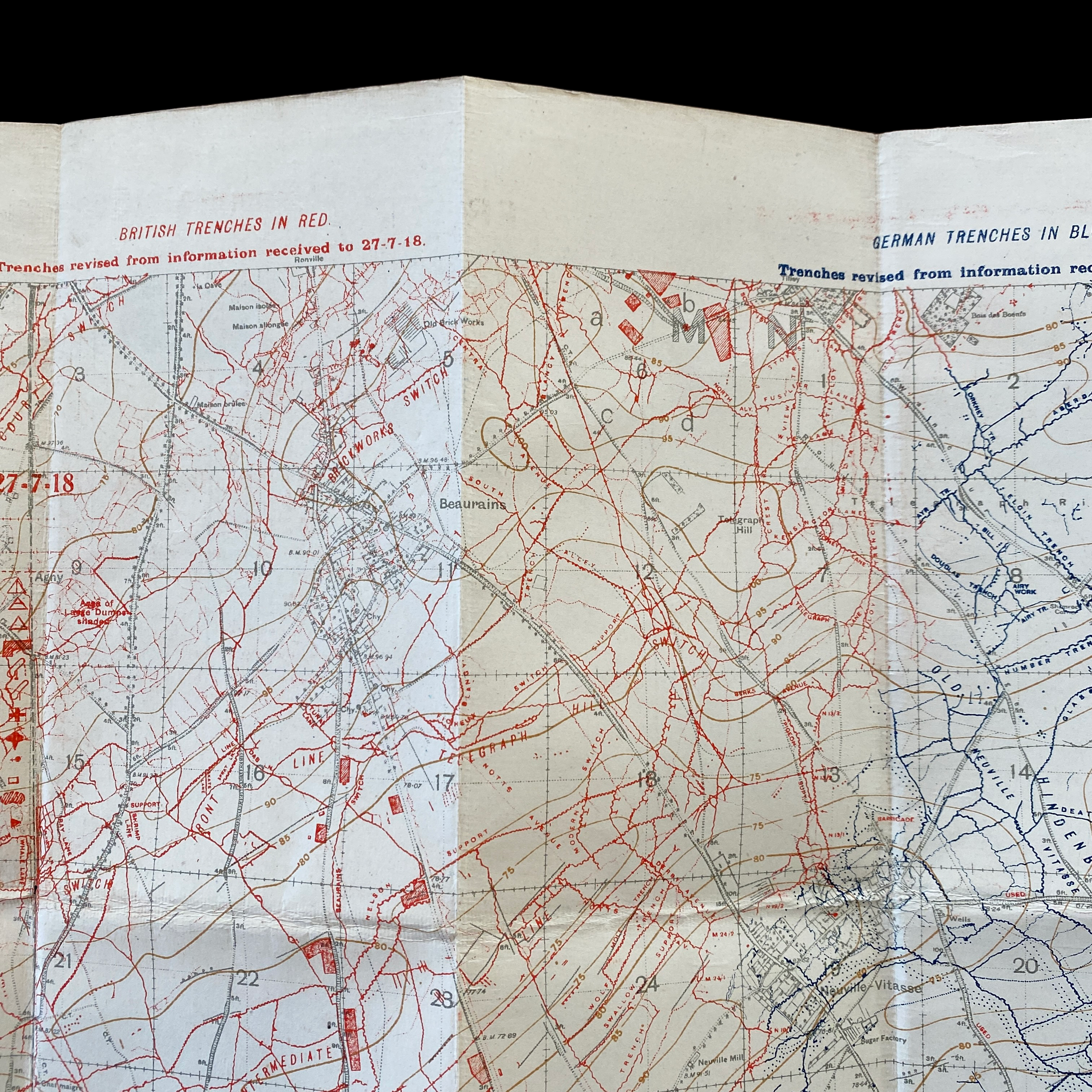
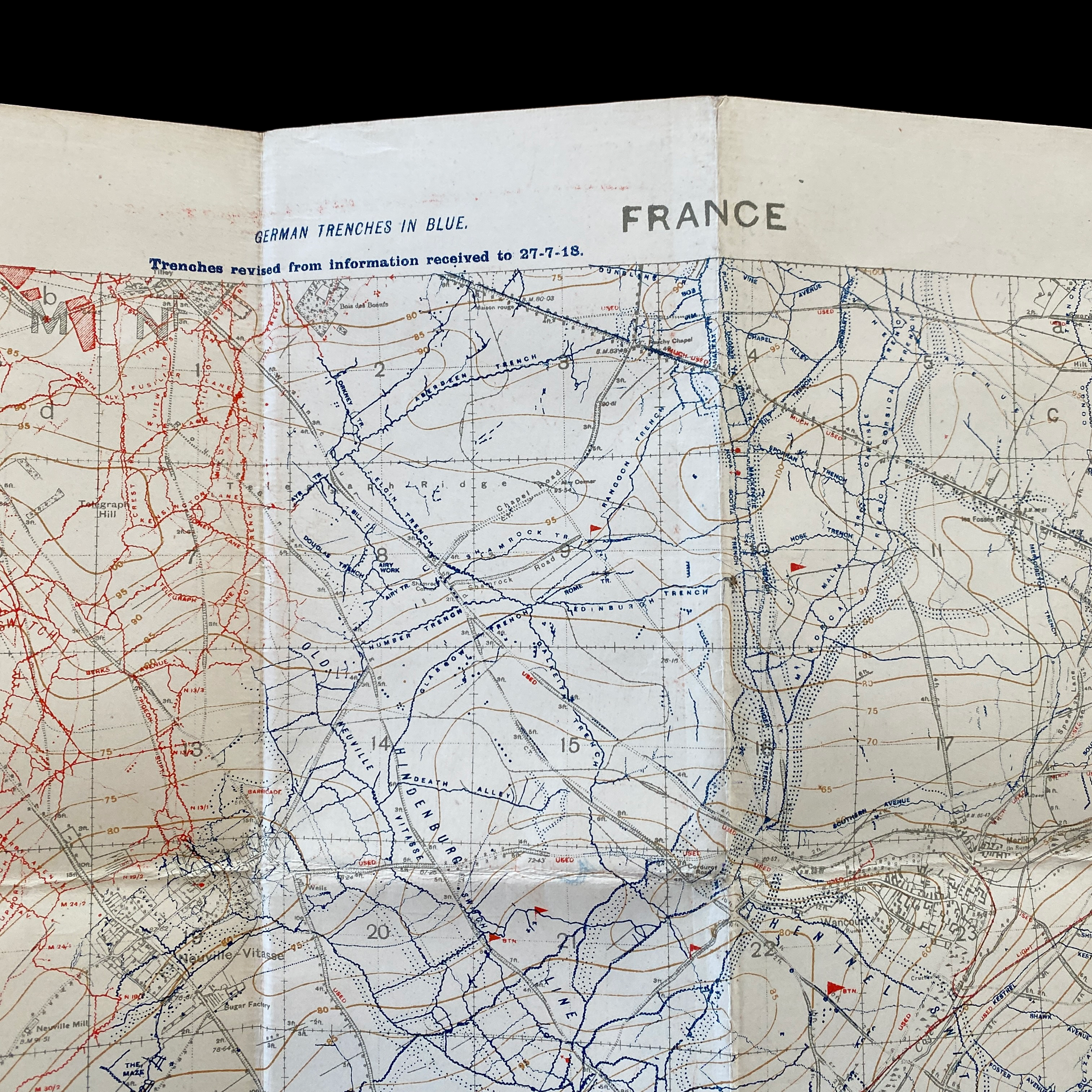
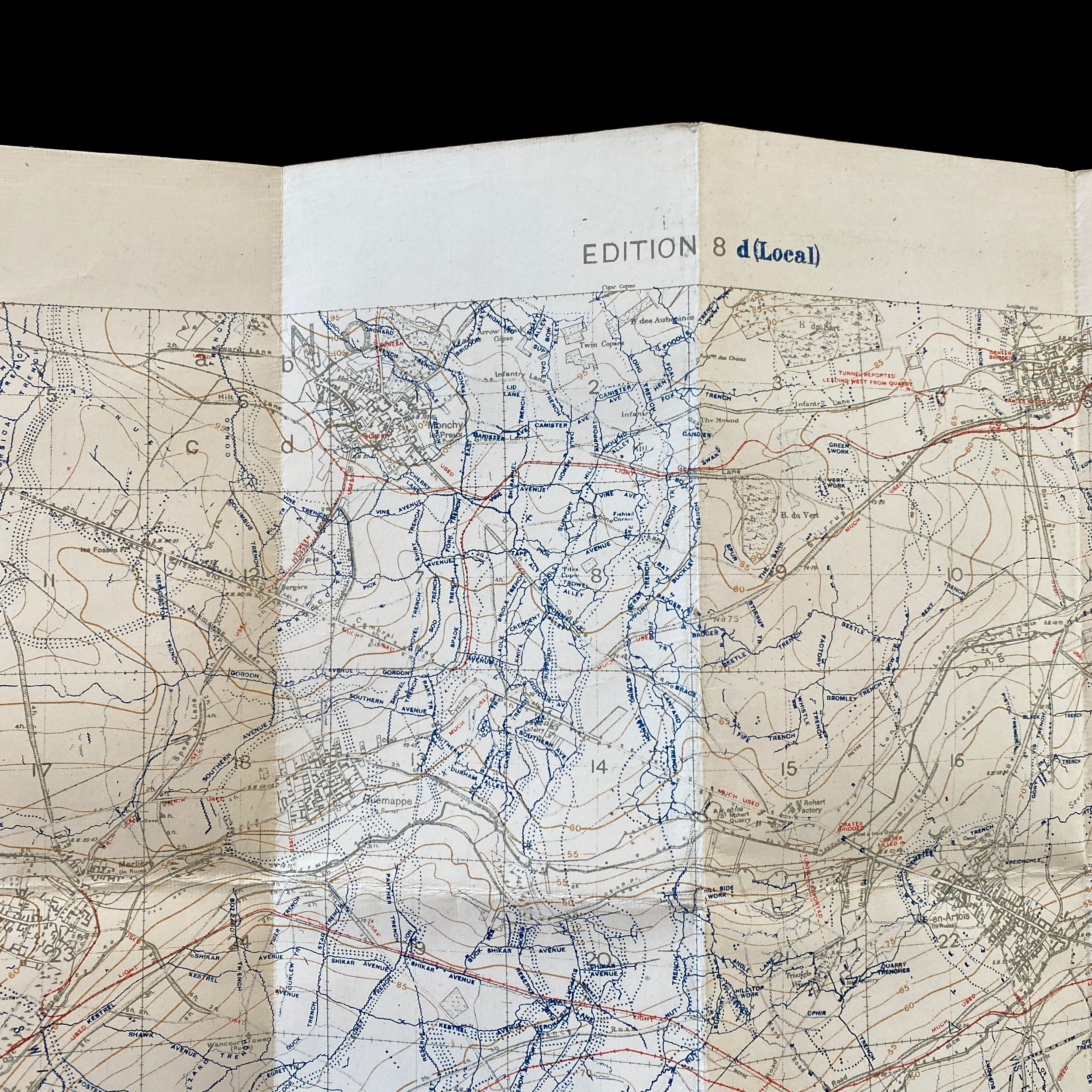

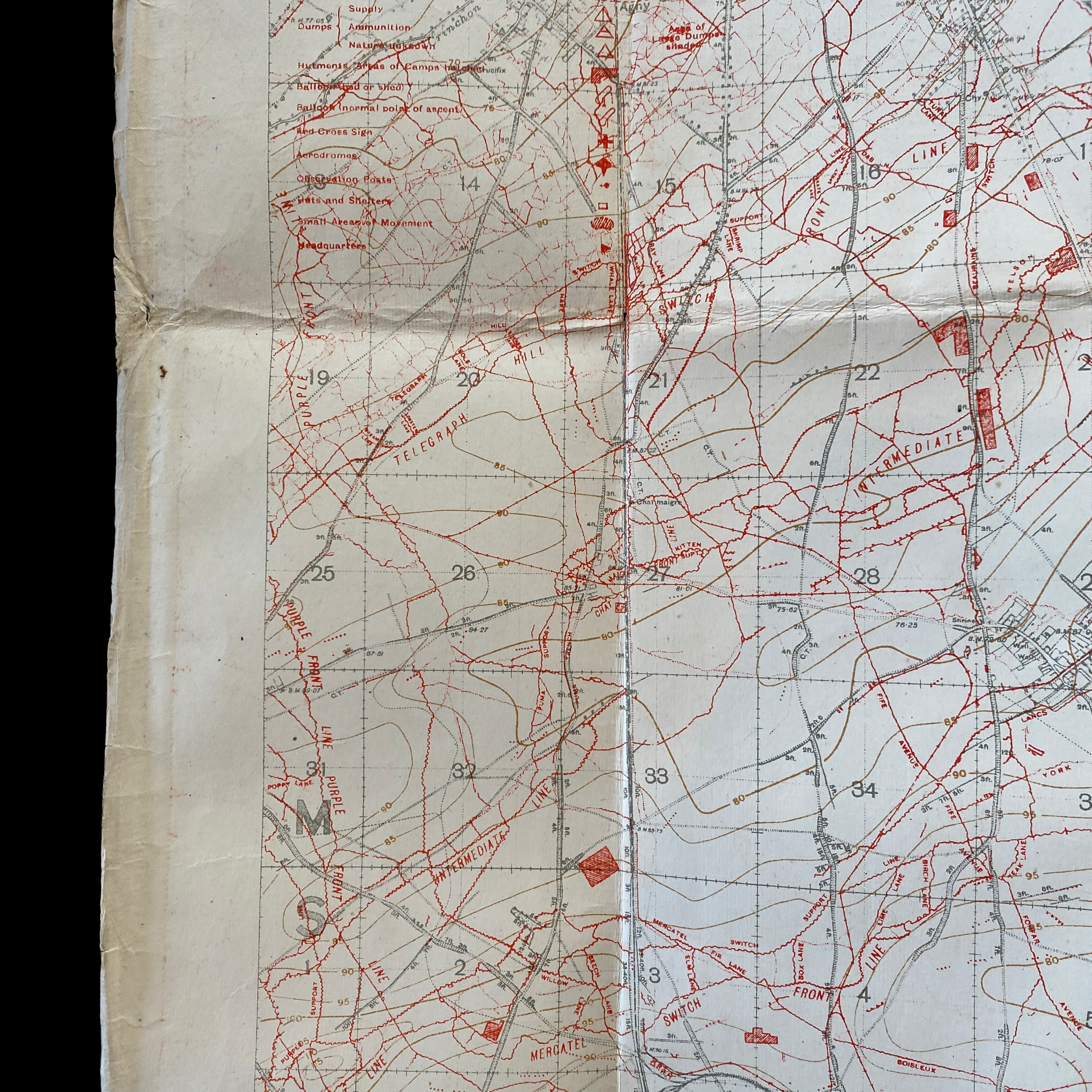
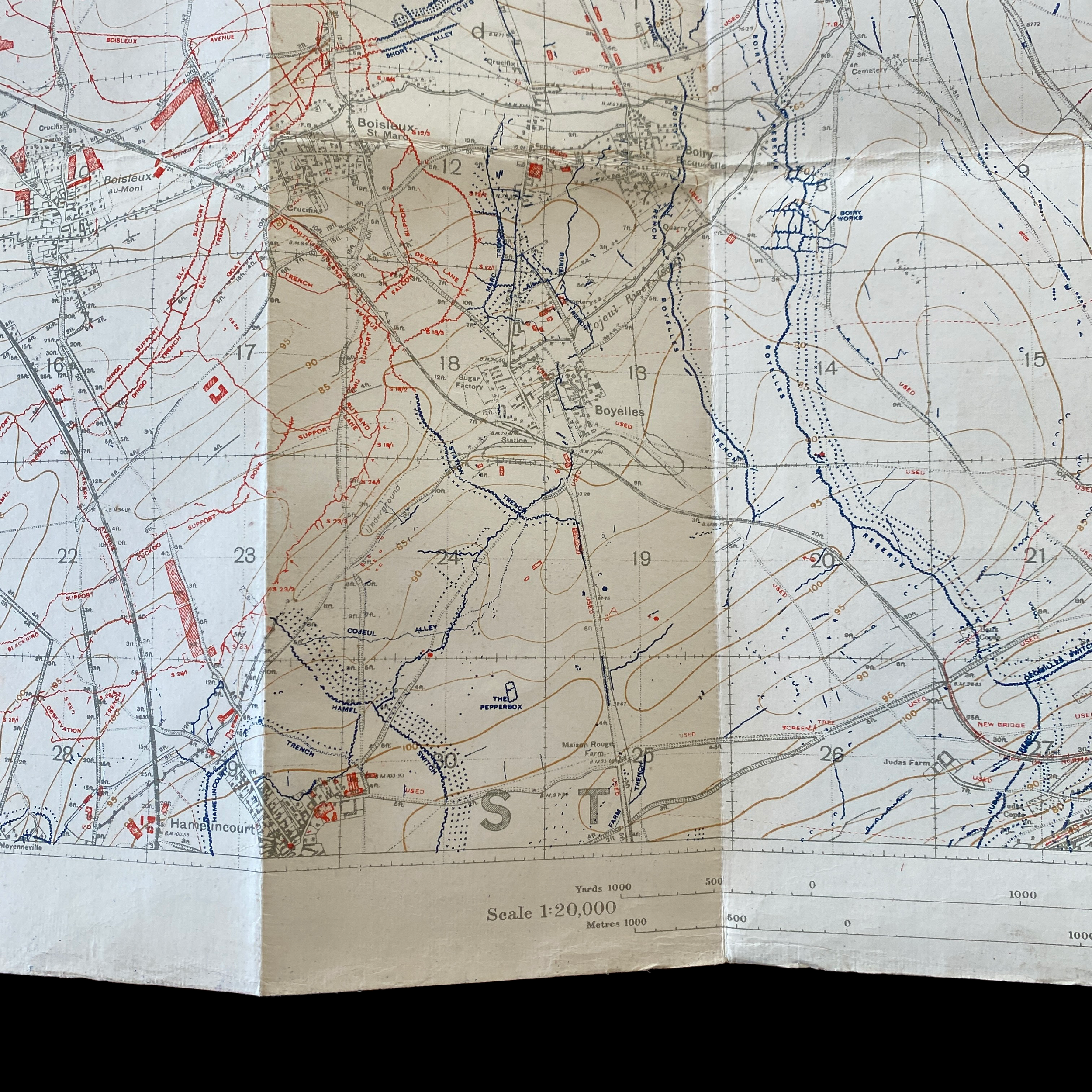

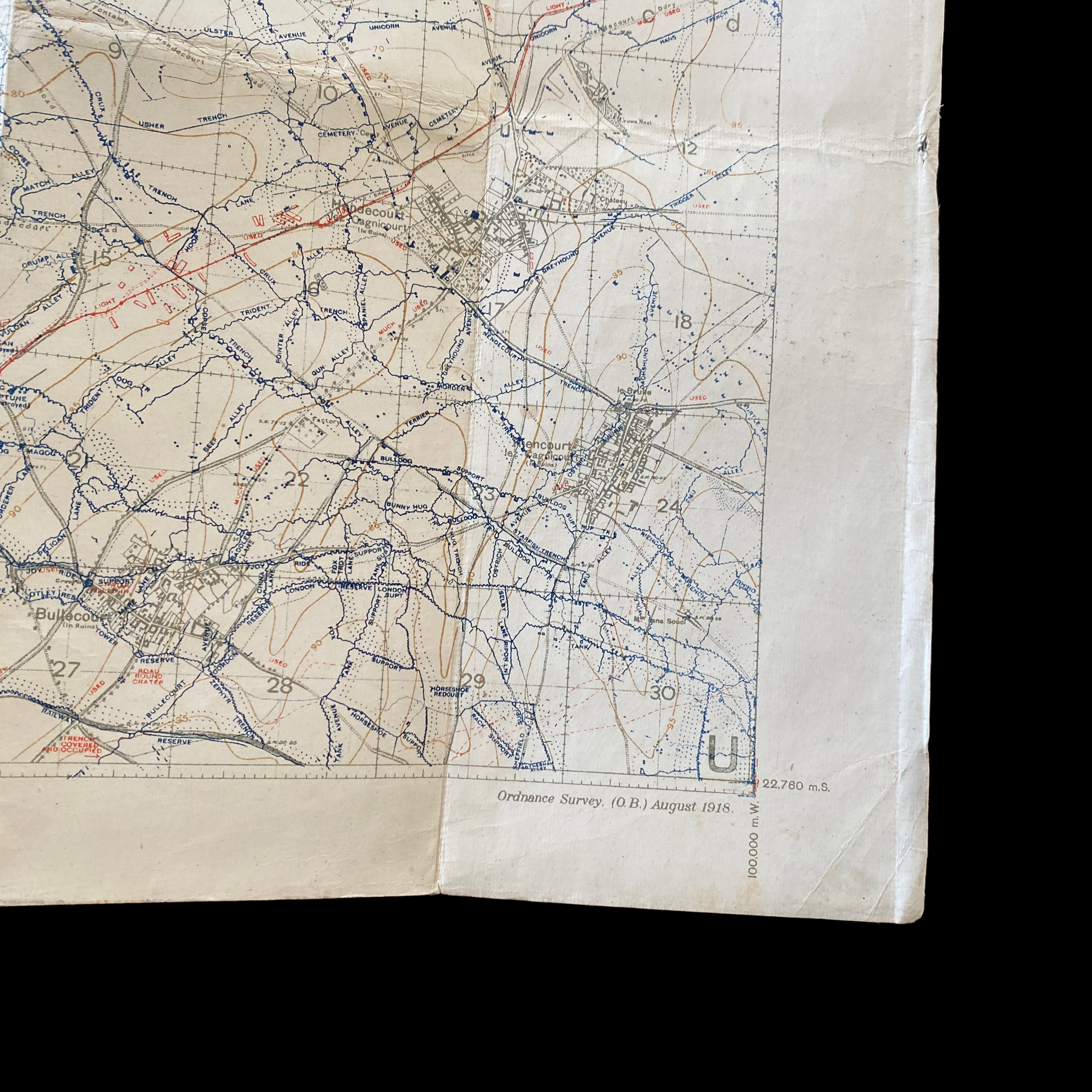

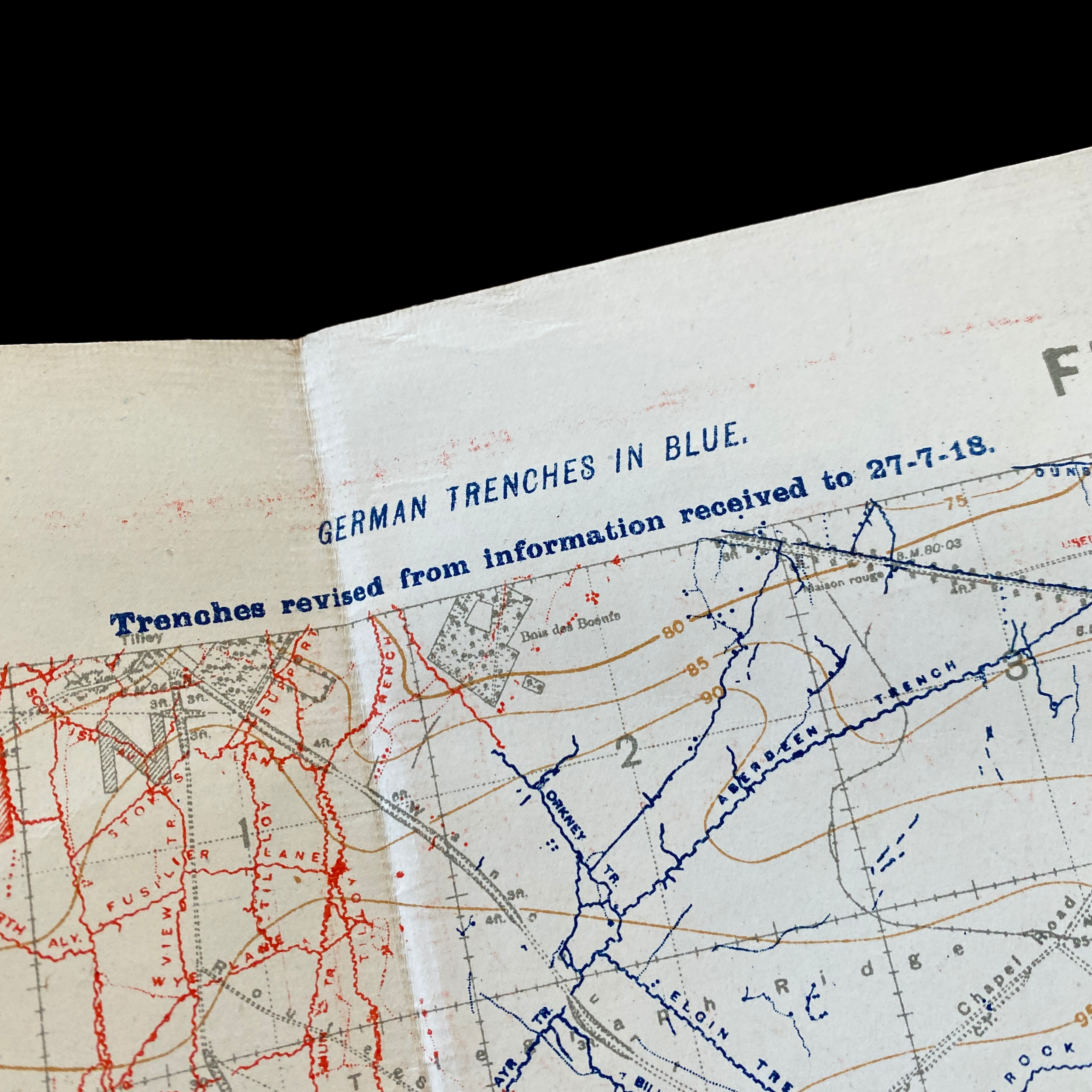
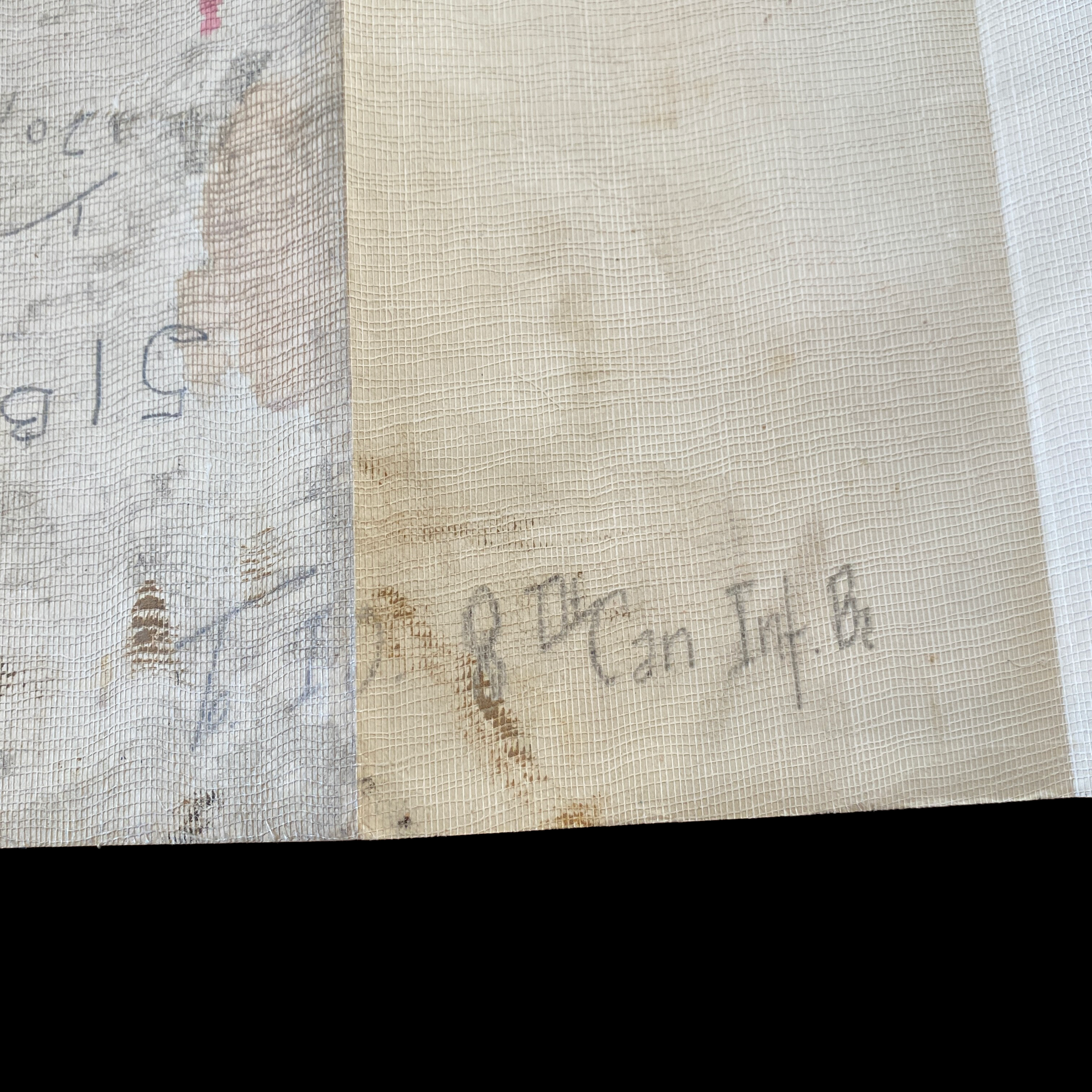

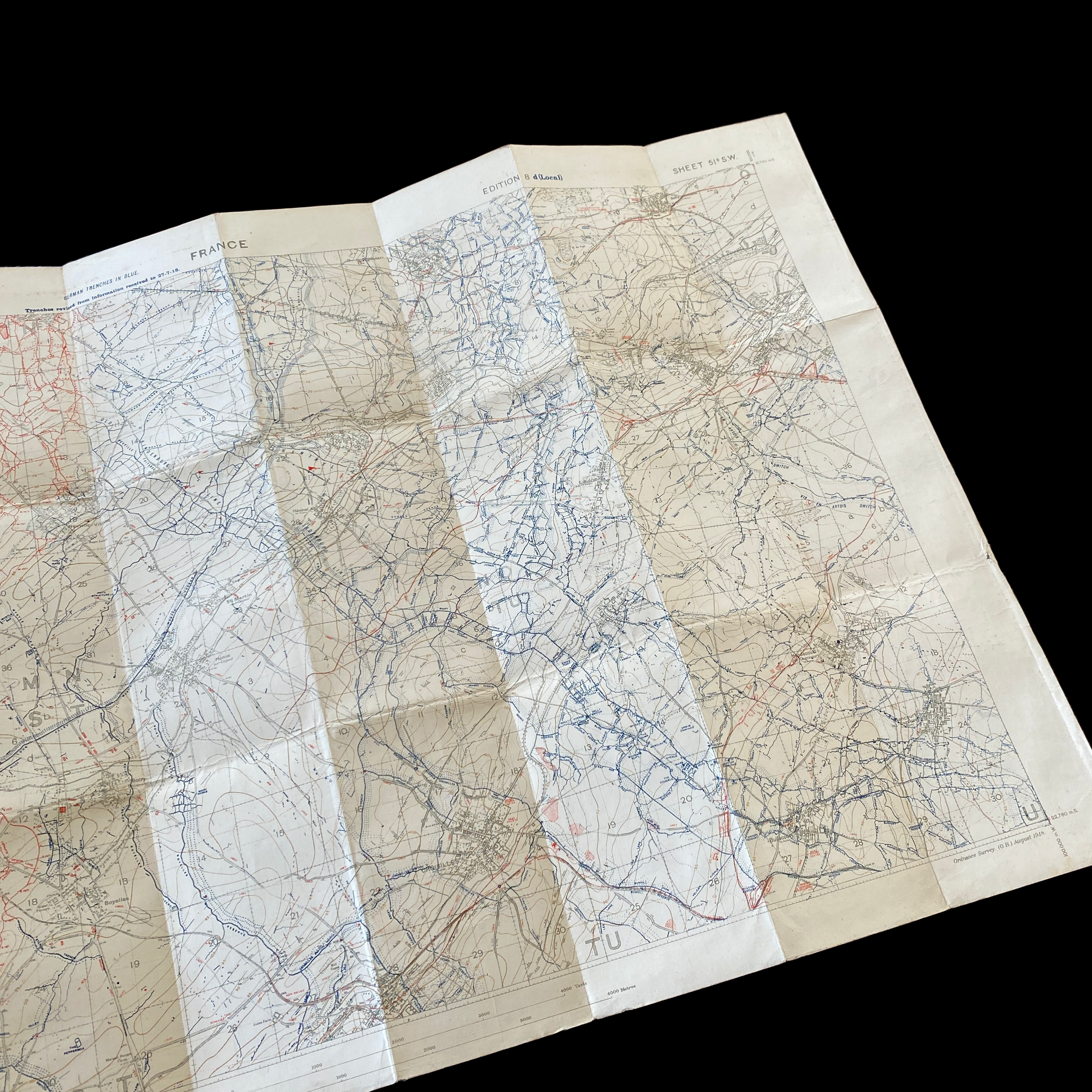

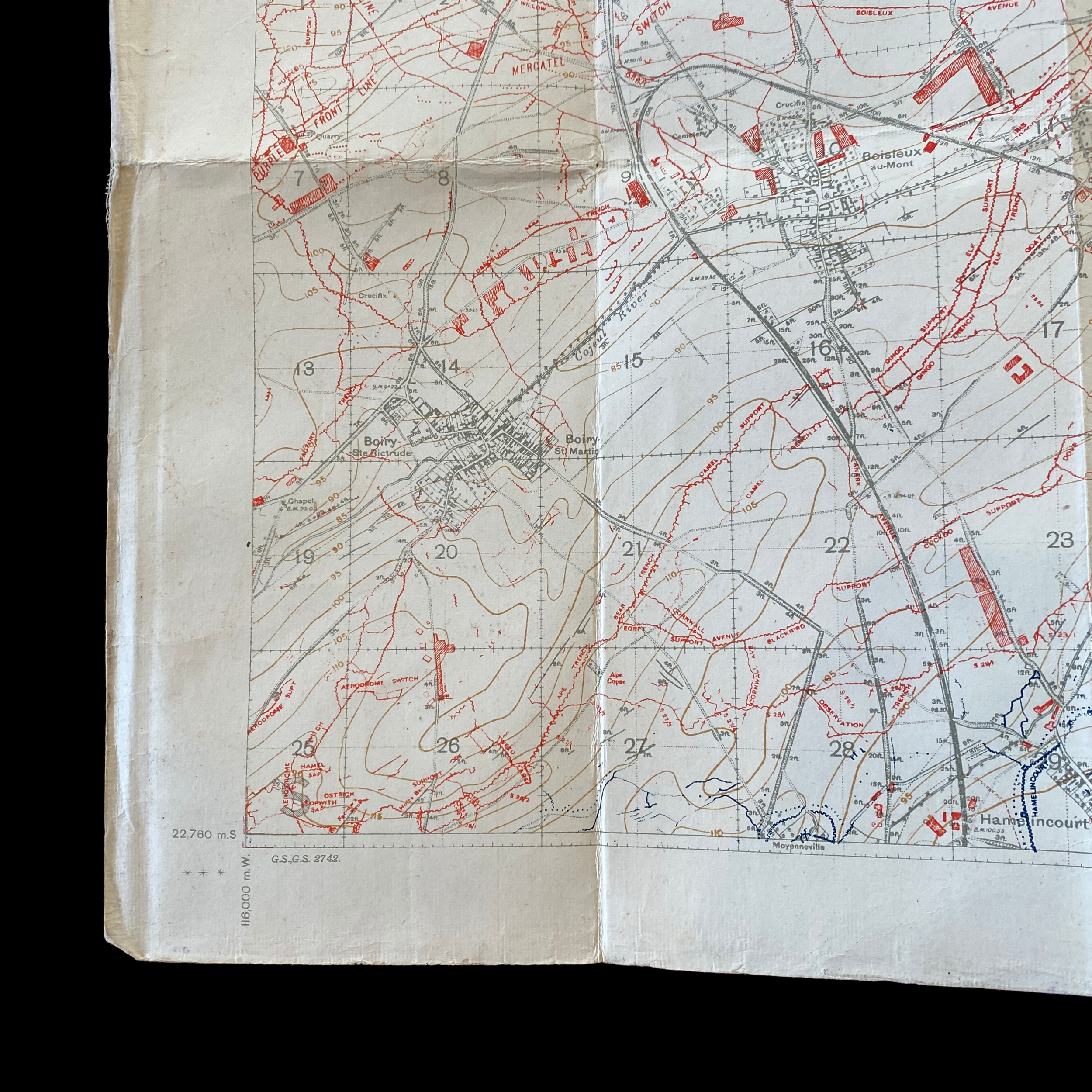
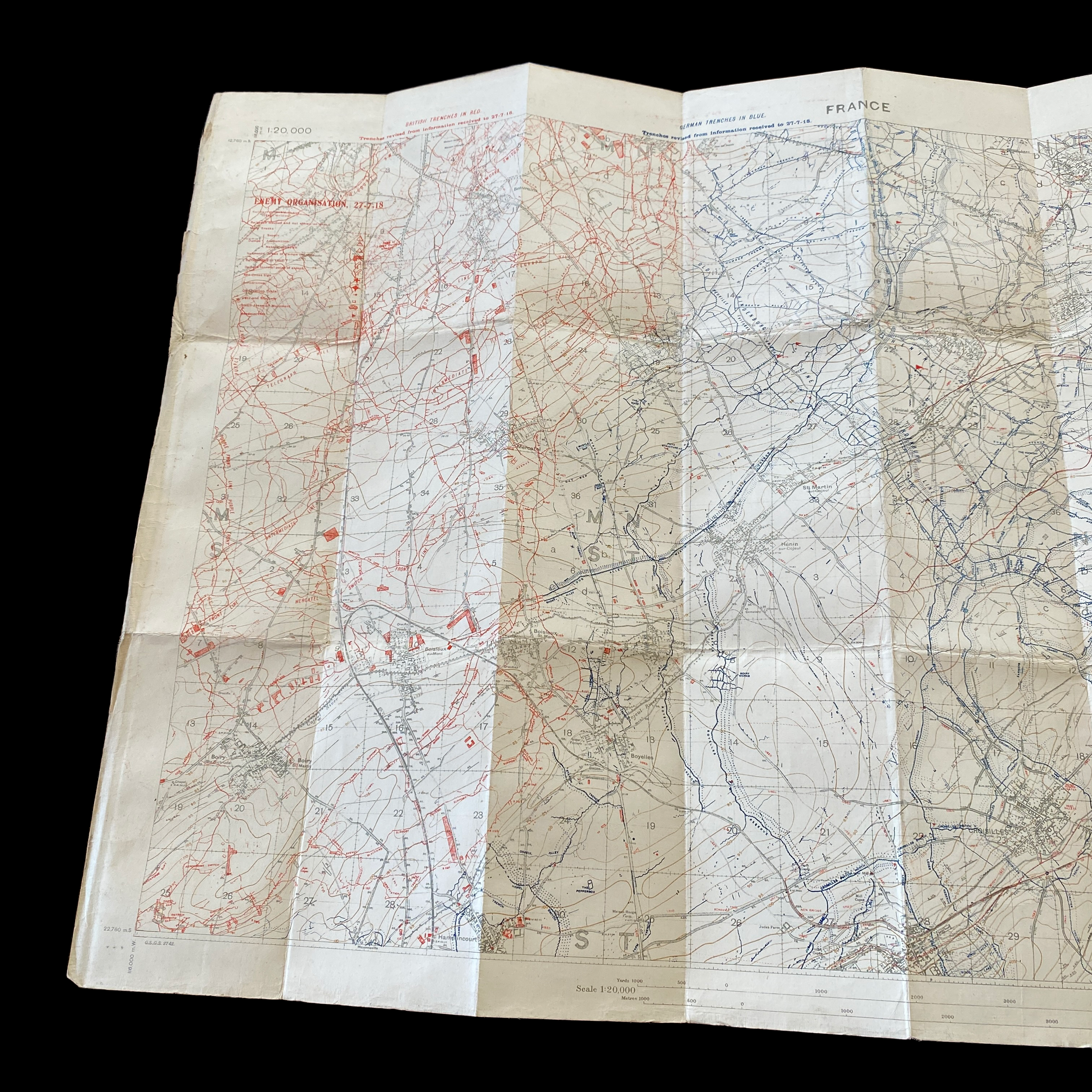



















VERY RARE! 8th Infantry Battalion Canadian Expeditionary Force Drocourt-Quéant Line 1918 Trench Map of Hindenburg Line
Comes with hand-signed C.O.A.
This extremely rare and museum-grade 1918 WWI trench map was used by the 8th Battalion, Canadian Expeditionary Force (CEF) while fighting in the Hundred Days offensive near the infamous Hindenburg Line. This trench map is extremely detailed and was used during the 8th Battalion, Canadian Expeditionary Force’s fighting on the Drocourt-Quéant Line. The Drocourt-Quéant Line is a section of the infamous Hindenburg Line, was one of the most strongly defended German defence systems in the First World War. The Germans had spent over two years securing the position and had reinforced it with concrete bunkers and machine gun nests. To capture the enemy trenches the Canadians would have to advance through five belts of barbed wire and overcome seven battle-hardened German divisions who had been ordered to hold the line at all costs.
This CEF trench map shows BRITISH trenches in RED as on July 27th, 1918 and GERMAN trenches in BLUE as on July 27th, 1918. This is a very rare trench map in that it shows a very rare “ENEMY ORGANIZATION” key with detailed information.
The Canadian Corps were ordered to attack just after dawn on the morning of September 2, 1918. With limited time to plan the attack the Canadians were forced to rely on brute force. As they advanced, the Canadians found themselves pined down by heavy machine-gun fire and unable to move. Over the course of the day seven Canadians earned the Victoria Cross for braving the machine gun fire to save the lives of their comrades. Among them was Private William Metcalf. Metcalf leaped from the safety of his trench to draw the attention of a tank and direct it towards a fortified German position. When the position was finally captured Metcalf’s battalion discovered that they had been facing seventeen German machine guns.
By the end of the day the Germans knew that they had been beaten. When the Canadians prepared to continue their advance on the morning of September 3 they discovered that the enemy trenches were empty and that their preliminary barrage had been a waste of ammunition. During the night the German Army had retreated. Canadian Corps commander Sir Arthur Currie would later describe the Canadians’ capture of the D-Q line on September 2, 1918 as “one of the finest performances in all the war.”
Combat history of 8th Battalion, Canadian Expeditionary Force during The First World War:
YPRES, 1915, '17; Gravenstafel; St. Julien; FESTUBERT, 1915; MOUNT SORREL; SOMME, 1916, '18; Flers-Courcelette; Thiepval; Ancre Heights; Ancre, 1916; ARRAS, 1917, '18; Vimy, 1917; Arleux; HILL 70; Passchendaele; AMIENS; Scarpe, 1917, '18; Drocourt-Quéant; HINDENBURG LINE; Canal du Nord; Cambrai, 1918; VALENCIENNES; FRANCE AND FLANDERS, 1915-18.